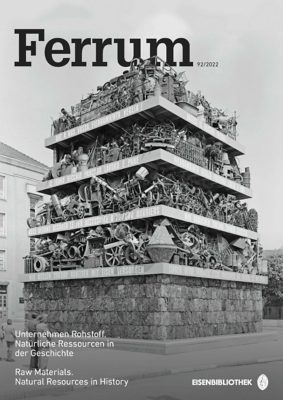Tina Asmussen
Arm, nützlich, giftig und verheissungsvoll
Eine Ressourcengeschichte von Blei in der Frühen Neuzeit
Blei wird nicht erst heute, es wurde bereits in der Frühen Neuzeit als eine äusserst ambivalente Ressource wahrgenommen: Es war ein unverzichtbarer Werkstoff mit zahlreichen Anwendungen, aber auch ein Umweltgift und Gesundheitsrisiko für Arbeiterinnen, Arbeiter und Bewohnerinnen, Bewohner von Bergbauregionen. Wie dieser Beitrag zeigt, beschränkte sich die Bedeutung von Blei nicht nur auf seine Rolle als Produktionsmittel und Handelsware in wirtschaftlicher und technologischer Hinsicht. Die Relevanz von Blei als Ressource eröffnet ein komplexes Netz von materiellen Bedeutungen und Wahrnehmungen, die aus dem modernen Bewusstsein verschwunden sind.
This article has been published in German. English Abstract:
Poor, useful, poisonous, or promising?
Lead in the early modern era
Not only today, but already in the early modern period, has lead been perceived as an extremely ambivalent resource: it was an indispensable material with numerous applications, but also an environmental toxin and health risk for workers and residents, inhabitants of mining regions. As this paper shows, the importance of lead was not limited to its role as a raw material in production and a commodity in economic and technological terms. The relevance of lead as a resource opens up a complex web of material meanings and perceptions that have since disappeared from modern consciousness.
